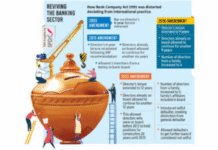

Garment shipment will continue to grow until January as we are already booked with an increased volume of work orders from retailers and brands.
Bangladesh’s exports surged in November as it raked in $4.04 billion, reflecting the strong demand for apparels from the country following reopening of US and European economies from the severe fallout of Covid-19, official figures showed yesterday.
This is the third time export earnings from merchandise shipment crossed the $4-billion mark in a single month in the country’s history. Exporters brought home a record $4.72 billion in October and $4.16 billion in September.
November’s receipts were 31.25 per cent higher, year-on-year, according to data from the Export Promotion Bureau (EPB), well above the target set by the government.
Exports have been rising for the last few months as demand for the garment items produced in Bangladesh made a comeback. Apparel items contribute about 85 per cent to foreign sales.
Between July and November, garment shipments grew 22.97 per cent to $15.85 billion. Of the sum, $8.98 billion came from knitwear shipment, up 25.91 per cent, and $6.87 billion from woven items, an increase of 19.32 per cent.
Faruque Hassan, president of the Bangladesh Garment Manufacturers and Exporters Association (BGMEA), said the shipment of apparel items had started soaring since September.
“The garment shipment will continue to grow up to next January as we are already booked with an increased volume of orders from international retailers and brands.”
He expects garment shipment to grow by at least 30 per cent year-on-year at the end of the current fiscal year.
Local suppliers have received over 20 per cent more orders over the past year as orders are shifting from the countries such as India, China, Vietnam, Myanmar and Ethiopia to Bangladesh because of the competitive price it offers.
Overall, earnings from the merchandise shipment rocketed in July and November, fetching $19.79 billion, an increase of 24.29 per cent.
Frozen and live fish shipment soared 23.39 per cent to $286.85 million, agricultural and vegetables exports grew 24.37 per cent to $556.46 million, and pharmaceuticals sales were up 29.78 per cent at $90.61 million.
Leather and leather goods shipments increased by 27.41 per cent to $456.85 million and cotton and cotton yarn shipment went up by 38.73 per cent to $80.48 million.
From July to November, terry towel shipment rose 25.50 per cent to $20.23 million and footwear (non-leather) shipment advanced 17.11 per cent to $175.4 million, EPB data showed.
Jute and jute goods did not fare well during the five-month period, sliding 17.45 per cent to $456.83 million.
Md Saiful Islam, president of the Leathergoods and Footwear Manufacturers & Exporters Association of Bangladesh, says the export trend of leather and leather goods is better as the economies have reopened following the improvement in the Covid-19 situation.
“Work orders are flowing robustly. If we have a smooth supply of raw materials, our exports will continue to grow.”
Local suppliers can meet 80 per cent of the demand for raw materials for the leather and leather goods industry.
“So, a smooth supply of raw materials is required for the growth of the sector.”
The entrepreneur called for making the central effluent treatment plant at the Savar Tannery Industrial Estate fully functional.
BGMEA’s Hassan says they are not much worried about the outbreak of a new coronavirus variant, Omicron, as buyers are still placing a large volume of orders and the global supply chain is functioning properly.
“We have taken a lot of safety measures in the factories to contain the spread of the virus.”


 For all latest news, follow The Daily Star’s Google News channel.
For all latest news, follow The Daily Star’s Google News channel. 







